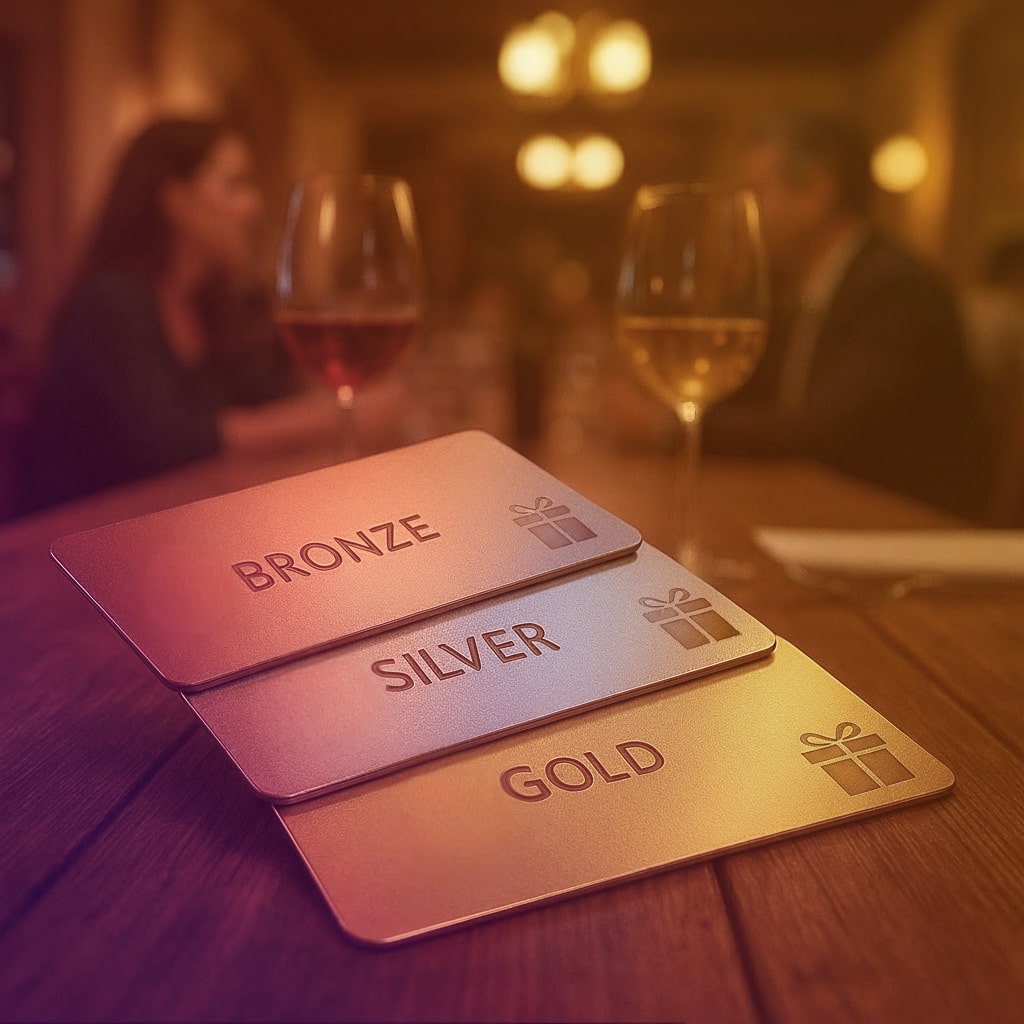When it comes to a Restaurant Loyalty Program, points alone aren’t always enough to keep customers engaged. Modern diners crave recognition, exclusivity, and rewards that feel tailored to their loyalty. That’s where tiered loyalty programs come in. By introducing levels such as bronze, silver, and gold, restaurants can gamify loyalty, reward repeat visits, and create emotional connections that go far beyond simple discounts, something most rewards program models fail to capture on their own.
In this blog, we’ll explore why tier-based loyalty structures are so effective for restaurants, highlight their key benefits, and show how tools like Loyalty Cubed make them easy to implement inside any customer loyalty program or restaurant mobile app.
The Psychology of Tiers
Humans are naturally drawn to status and achievement. Just as gamers strive to level up or frequent flyers chase elite airline statuses, diners love knowing their loyalty is recognized and rewarded.
A tiered program taps into this psychology by:
- Creating motivation: Guests want to reach the next level.
- Delivering recognition: Higher tiers feel like a badge of honor.
- Unlocking exclusivity: Rewards get better as loyalty grows.
This mix of recognition and exclusivity drives repeat visits and larger check sizes. Customers don’t just want points, they want progress,visibility, and access to elevated restaurant rewards that feel meaningful.
Benefits of Tiered Loyalty Programs for Restaurants
- Encourage Repeat Visits
Customers return more frequently because every purchase helps them climb the loyalty ladder.
- Increase Average Spend
When rewards scale with spending, guests are motivated to order that extra appetizer, dessert, or bottle of wine to reach the next tier.
- Differentiate Your Brand
A well-designed tiered customer loyalty program feels unique compared to generic loyalty cards or points systems. It can also align with your restaurant’s brand story (e.g., “Explorer,” “Adventurer,” and “Legend” tiers for a themed restaurant).
- Segment Your Customer Base
Tiers help restaurants identify high-value guests and treat them differently, making targeted marketing easier especially when using insights from restaurant mobile apps.
Steps to Implement a Tiered Loyalty Program
Step 1: Define Your Tiers
Decide how many levels you’ll offer (typically three is ideal). Name them in a way that matches your brand personality.
Step 2: Set Clear Requirements
Outline how customers advance, based on visits, spending, or points earned. Keep thresholds realistic to encourage participation.
Step 3: Offer Exciting Rewards
Scale rewards by tier. For example:
- Bronze: Free drink after 5 visits
- Silver: Birthday dessert plus priority reservations
- Gold: Exclusive event invitations, chef’s table access
These perks feel even more engaging when delivered through a restaurant mobile app that automates tracking and reward notifications.
Step 4: Promote Your Program
Communicate benefits clearly in your restaurant, on your website, and through social media.
Step 5: Track and Adjust
Use analytics from platforms like Loyalty Cubed to measure program performance and adjust rewards as neede
Real-World Example
Imagine a local steakhouse with a three-tier loyalty program:
- Bronze: Free appetizer on the third visit.
- Silver: Priority reservations and 10% off wine bottles.
- Gold: Invitations to exclusive tasting events.
Within six months, the restaurant notices guests dining more often and spending more per check to reach higher tiers. That’s the power of a tiered rewards program working hand in hand with a smart customer loyalty program.
Tiered loyalty programs work because they reward both behavior and ambition. They transform dining into an experience of progression, status, and exclusivity. With the right platform, implementing tiers is simple, and the payoff in customer loyalty is enormous.
Ready to design a tiered loyalty program that keeps your guests coming back for more? Book a demo with Loyalty Cubed today and see how we can help you create a Restaurant Loyalty Program that drives retention, revenue, and deeper engagement.


